What is adware?
Adware is a shortened term for Advertising Supported Software – a phrase that is used to describe software programs that either download or display advertisements on your computer when you're connected to the Internet. These adverts can take the form of pop-up windows or banner adverts and are very often tailored to match your specific needs or interests. At first it might seem like a coincidence but after a while, when you see your 10th advert on Chrome that is showing you cheap flight or hotel booking websites, when you've recently been searching online for vacation options, you might start wondering if there is a little more to adware than meets the eye. We'll explain more in a moment.How does adware end up on my computer and Chrome?
In the majority of cases adware will be bundled with a program or software that you are downloading. This may be free software, or you may have paid for it; it doesn't matter – no one program can be guaranteed to be free of adware (or any other type of Potentially Unwanted Program for that matter). An adware developer creates their ads for a number of reasons; it may be to recoup the costs of developing the original software, or it might be so they can generate income via the adverts and therefore offer their main product for free, or for a lower cost. Some variants of adware are specifically designed to display ads on Chrome. Such adware programs usually install malicious browser extensions that can gather certain information about your browsing habits and then use it to display more relevant ads. It might be very difficult to remove malicious chrome extensions as they are often installed with developer rights or otherwise protected. Chrome team is aware of this issue and recently started disabling developer mode extensions but scammers find other ways to infect Chrome with adware extensions. Besides, some adware do not even install extensions, they simply inject ads on Chrome.How does adware know what pop-up or banner ads to show me?
No, it's not a coincidence and there is no magic all-seeing eye who just happens to know that, when you should be working, you're actually looking online at the latest must-have gadgets, or shoes and purses. That's because adware has been designed to monitor your Chrome and internet usage, track which websites you visit, and collect that data. This information is then sent to the developer or a scammer who will then show you targeted advertising based on your browsing habits. Very often scammer display every possible advertisement they can to increase revenue. Some of the ads on Chrome may lead you to rogue programs or services. Be very careful!Though this might seem somewhat helpful at first, most PC users quickly find targeted adverts (especially the pop-up variety) annoying and distracting. Think about it for a moment more and you'll very likely come to the conclusion that adware is actually an invasion of your privacy.
The adware method
If you're using free software that has adware included you may well have noticed that you'll be given the option of purchasing a licensed version that doesn't display adverts. Sometimes this upgraded version may also have additional functions. Again, this is another nice little income source for its developer.How dangerous is Chrome adware?
Adware developers often protest that they are not invading your privacy however their spying tactics scream otherwise to many computer users – and let's face it, how do you really know what is and isn't true? Protect yourself with reputable anti-malware software and don't fall prey to the annoyance and potential danger of adware.If you have questions, please leave a comment down below. I will be more than happy to help you. Good luck and be safe online!
Written by Michael Kaur, http://deletemalware.blogspot.com
Remove Adware from Chrome:
1. First of all, download anti-malware software and run a full system scan. It will detect and remove adware from your computer. You may then follow the manual removal instructions below to remove the leftover traces of adware and Chrome extensions. Hopefully you won't have to do that.2. Remove adware programs from your computer using the Add/Remove Programs control panel (Windows XP) or Uninstall a program control panel (Windows 7 and Windows 8).
Go to the Start Menu. Select Control Panel → Add/Remove Programs.
If you are using Windows Vista or Windows 7, select Control Panel → Uninstall a Program.

If you are using Windows 8, simply drag your mouse pointer to the right edge of the screen, select Search from the list and search for "control panel".

Or you can right-click on a bottom left hot corner (formerly known as the Start button) and select Control panel from there.
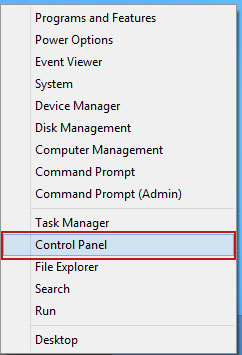
3. Uninstall recently installed programs or the ones that you do not recognize. When the Add/Remove Programs or the Uninstall a Program screen is displayed, scroll through the list of currently installed programs and remove the following:
- Quiknowledge
- LyricsSay-1
- Websteroids
- BlocckkTheAds
- HD-Plus 3.5
- and any other recently installed application
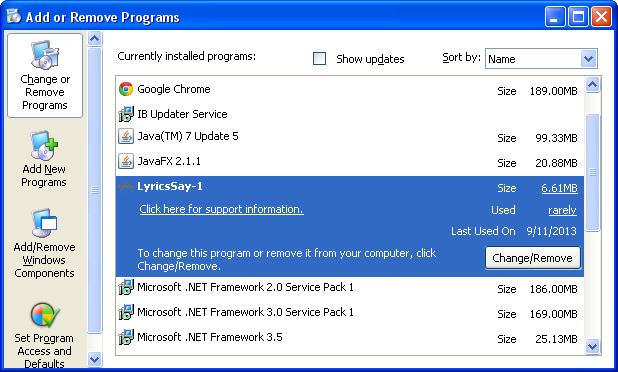
Simply select each application and click Remove. If you are using Windows Vista, Windows 7 or Windows 8, click Uninstall up near the top of that window. When you're done, please close the Control Panel screen.
4. Open Google Chrome. Click on Chrome menu button. Go to Tools → Extensions.
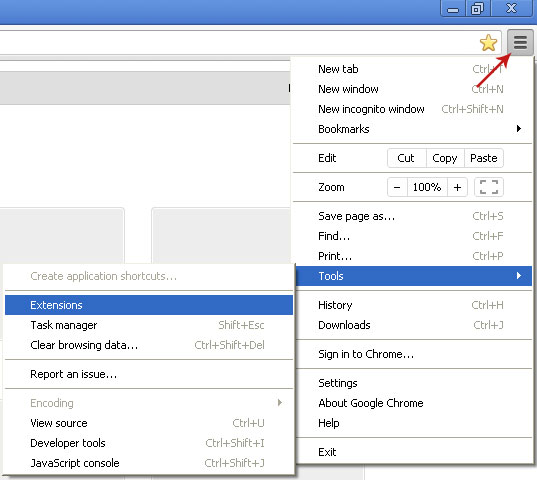
5. Click on the trashcan icon to remove BlocckkTheAds, LyricsSay-1, Websteroids, Quiknowledge, HD-Plus 3.5 and other extensions that you do not recognize.
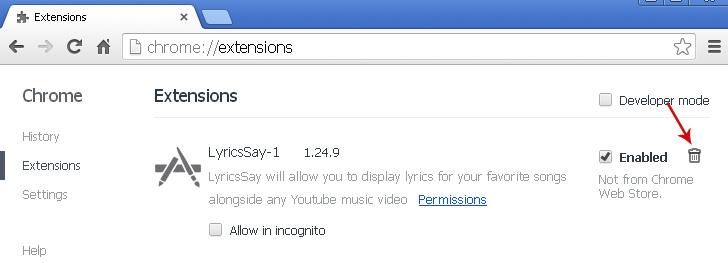
If the removal option is grayed out then read how to remove extensions installed by enterprise policy.

6. Then select Settings. Scroll down the page and click Show advanced settings.

7. Find the Reset browser settings section and click Reset browser settings button.
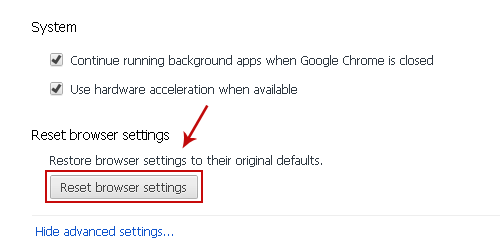
8. In the dialog that appears, click Reset. Close Chrome.
9. Use CCleaner to remove unnecessary system/temp files and browser cache. It’s always a good idea to get rid of unnecessary internet/system files or corrupter Windows registry values that may cause various problems to your computer.


Không có nhận xét nào:
Đăng nhận xét